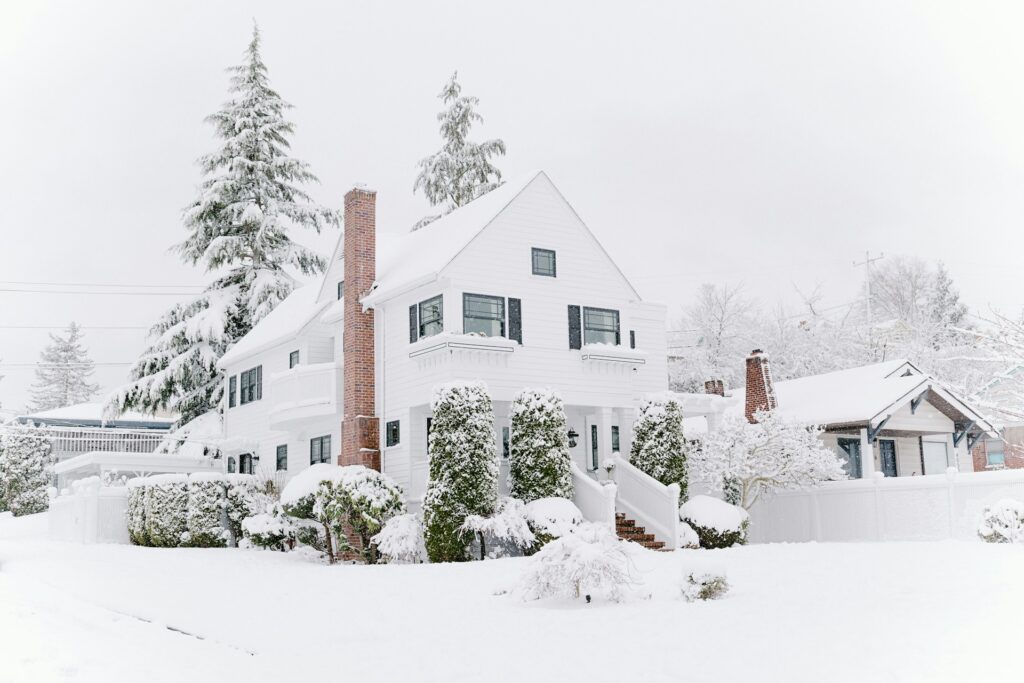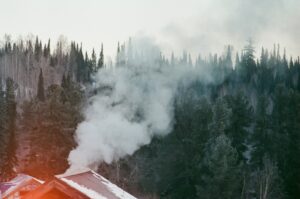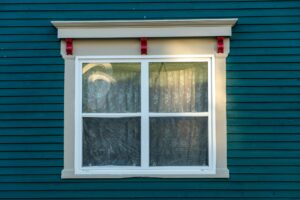Battle Ground, Washington, experiences damp Pacific Northwest winters that can feel chilly and relentless. From heavy rainfall to occasional freezing temperatures, winter’s demands can stress an unprepared home. Weatherproofing isn’t just about adding insulation, it’s about creating a cozy environment, preventing moisture issues, and optimizing energy costs.
Below, we explore how you can shield your home from the seasonal shifts in Battle Ground. We’ll discuss sealing cracks, insulating key areas, and pinpointing precisely where weatherproofing projects make the biggest impact. Each insight blends practical know-how with strategic approaches, ready to be acted upon this fall.
Understanding Battle Ground’s Climate Challenges
Battle Ground’s climate is typically mild with heavier rainfall that ramps up from fall through winter. Yet chilly nights and occasional freezing can stress a house as outside moisture tries to work its way in. Along with the rainy season, moisture can accumulate in your foundation, crawl spaces, and crevices.
• Persistent, steady rainfall saturates windows, doors, siding, and roofs.
• Humid conditions can intensify mold or mildew concerns if left unchecked.
• Rapid temperature fluctuations mean your insulation and seals must be robust.
In this environment, preparing in early fall can set the stage for comfort all winter long. By addressing vulnerabilities before the rains intensify, homeowners can reduce drafts, control humidity, and ease the load on heating systems.
Fall Timing Advantages
Autumn is the ideal period for weatherproofing in Battle Ground. You aren’t dealing with snow or frozen ground, and the moderate temperatures help sealants cure effectively.
• Repairs performed in mild weather are typically more effective.
• Contractors are often more available in fall than during peak winter months.
• Sealing now allows you to lock in a stable indoor environment and minimize heat loss.
When you schedule your weatherproofing in the fall, you benefit from fewer moisture-related issues that can complicate roof or siding work. This proactive approach saves both time and money, reducing the chance of major damage during a winter storm.
Comprehensive Weatherproofing Approach
1. Roof Inspection and Maintenance
The roof is your main line of defense against Battle Ground’s persistent downpours. It’s smart to identify missing shingles, damaged flashing, or clogged gutters.
• Missing or damaged shingles can allow water infiltration.
• Gutters clogged with leaves and debris can overflow, leading to potential foundation problems.
• Ensuring proper flashing around chimneys and vents reduces the risk of leaks.
A Certified Roofing Specialist can help with the thorough inspection. If repairs are needed, tackle them before moisture creeps inside. Learn more from the NFPA’s roof safety guide.
2. Window and Door Seal Checks
Windows and doors act as gateways , for better or worse. Gaps around these fixtures are notorious for allowing chilly drafts and water leaks.
• Examine weatherstripping for cracks, tears, or looseness.
• Check any caulk lines, where age or UV exposure can leave them brittle.
• Evaluate door sweeps and thresholds, ensuring they fully seal against wind-driven rain.
A quality seal keeps energy costs manageable and your home comfortable. Don’t forget to see if your windows have condensation or fogging between panes, a sign that seals might not be holding properly.
3. Siding and Exterior Walls
Siding stands between you and the elements. However, over time, even the most durable exterior walls can develop small openings.
• Inspect for loose or damaged panels that allow moisture behind the siding.
• Look for rot on wooden surfaces, especially near joints and seams.
• Check for cracked or flaking paint that could signal hidden water damage.
If damage is found, you’ll want to repair or replace compromised sections. A fresh coat of protective paint or sealant can further weatherproof your home’s exterior.
4. Foundation and Crawl Space Moisture Management
With persistent rainfall, water can accumulate against your foundation or leak into your crawl space. That’s where mold, mildew, and worse can take hold.
• Ensure gutters and downspouts direct water away from your home’s foundation.
• Inspect crawl space vents: sometimes, proper ventilation helps reduce moisture.
• Look for soggy patches in the yard indicating improper drainage or leaky plumbing.
Some older homes have minimal vapor barriers, allowing dampness to invade. Upgrading or adding a vapor barrier in your crawl space can substantially reduce humidity and protect wooden structural elements.
5. Air Sealing and Insulation
Once you plug external gaps, address the air leaks hidden inside. Air sealing and insulation go hand in hand to form a continuous protective envelope.
• Identify cracks around electrical outlets, recessed lighting, and attic entry points.
• Add insulation in attics and walls to the recommended levels. In Battle Ground, an R-38 or higher is common for attic insulation.
• Seal ductwork in attics or crawl spaces to reduce energy losses.
When installed correctly, attic and wall insulation manage heat flow, ensuring you stay warm in winter and cool in summer. Proper sealing keeps cold drafts out and helps your furnace run more efficiently.
Comparison: Weatherproofing Priorities by Home Age
Each home in Battle Ground comes with its own maintenance history. The table below highlights top weatherproofing priorities for newer vs. older homes.
| Home Age | Key Weatherproofing Priorities | Why Important |
|---|---|---|
| Newer Homes (post-2000) | • Window and door sealing• Roofing materials check• Thorough attic insulation | Modern materials generally hold up well but still need sealing and checks. |
| Older Homes (pre-2000) | • Upgraded insulation• Siding inspections• Structural vulnerability assessments | Aging materials can degrade, leading to higher risk of rot or heat loss. |
Newer homes may have advanced building materials, but it’s crucial to monitor for accidental oversight or breakdown. Older homes present more potential for outdated materials and inefficiencies, making their weatherproofing needs more extensive.
Preventing High-Rainfall Water Intrusion
In a community where rain is inevitable, you want to be more than prepared. When water seeps in undetected, it can lead to mold or damage insulation.
• Keep gutters clean so rainwater is directed away from your foundation.
• Patch and seal cracks in sidewalks or driveways where water might pool and seep.
• Slope the soil around your home so water naturally drains away from the exterior.
Installing or maintaining an effective drainage system ensures you’re not fighting a buildup of moisture inside walls or around your basement. Checking sealing near minor cracks or leaks could protect your home from an expensive repair down the line.
Energy Savings Through Comprehensive Weatherproofing
Energy expenses can spike in winter, especially when moisture and cold air continually enter your living space. A well-sealed home:
• Reduces wear and tear on heating equipment.
• Stabilizes indoors temperatures, lowering monthly energy costs.
• Helps maintain healthier indoor air quality by blocking drafts and pollutants.
When you invest in professional weatherproofing, you’ll often find the returns in energy savings within a few seasons. Such improvements also raise your home’s overall value, an added benefit if you choose to list your property in the future.
FAQs About Battle Ground Weatherproofing
- What is the typical ROI for weatherproofing? Many homeowners see a reduction in energy bills of 10–30% after comprehensive weatherproofing. This often covers the initial investment in a few years.
- What improvements should I prioritize if my budget is limited? Start with lower-cost, high-impact solutions: sealing air leaks, upgrading weatherstripping around windows and doors, and repairing obvious roof or siding damage. These measures can often make a noticeable difference right away.
- Should I handle weatherproofing myself or hire a professional? DIY efforts cover smaller tasks like installing door sweeps or replacing simple weatherstripping. Larger projects, like dealing with extensive roof or siding work, may need a certified contractor. Professional eyes can spot hidden issues that might go unnoticed in a DIY approach.
- Are there any rebate or incentive programs for weatherproofing in Washington? Yes. Washington utilities, along with state and local energy agencies, sometimes offer rebates or subsidies. Check the Energy.gov weatherization assistance page or contact regional utilities for current incentives.
Making Battle Ground Weatherproofing Work for You
When you plan your home exterior renovation updates for fall, you set yourself up for a more comfortable and economical winter. Sealing windows, installing new insulation, checking roofs, each step keeps moisture in check and saves on energy bills. Proactive care means you’ll spend less time battling mold, rot, or unexpected repairs during the rainy months.
By focusing on foundational tasks such as sealing, insulating, and strategizing water drainage, your home becomes an ally against the elements. Pair thoughtful weatherproofing with routine inspections, and you’ll ensure that your Southwest Washington property remains snug and secure through the winter season, and for many more to come.
By addressing vulnerabilities now, you can safeguard both your family’s well-being and your property’s structural integrity. Additional resources are available from Consumer Reports home improvement guides.
Enjoy the confidence that comes with a weatherproofed home, ready to face the unique climate patterns of Battle Ground and the surrounding communities. As the temperature drops, you’ll rest comfortably, knowing you’ve secured a warmer, drier future.




